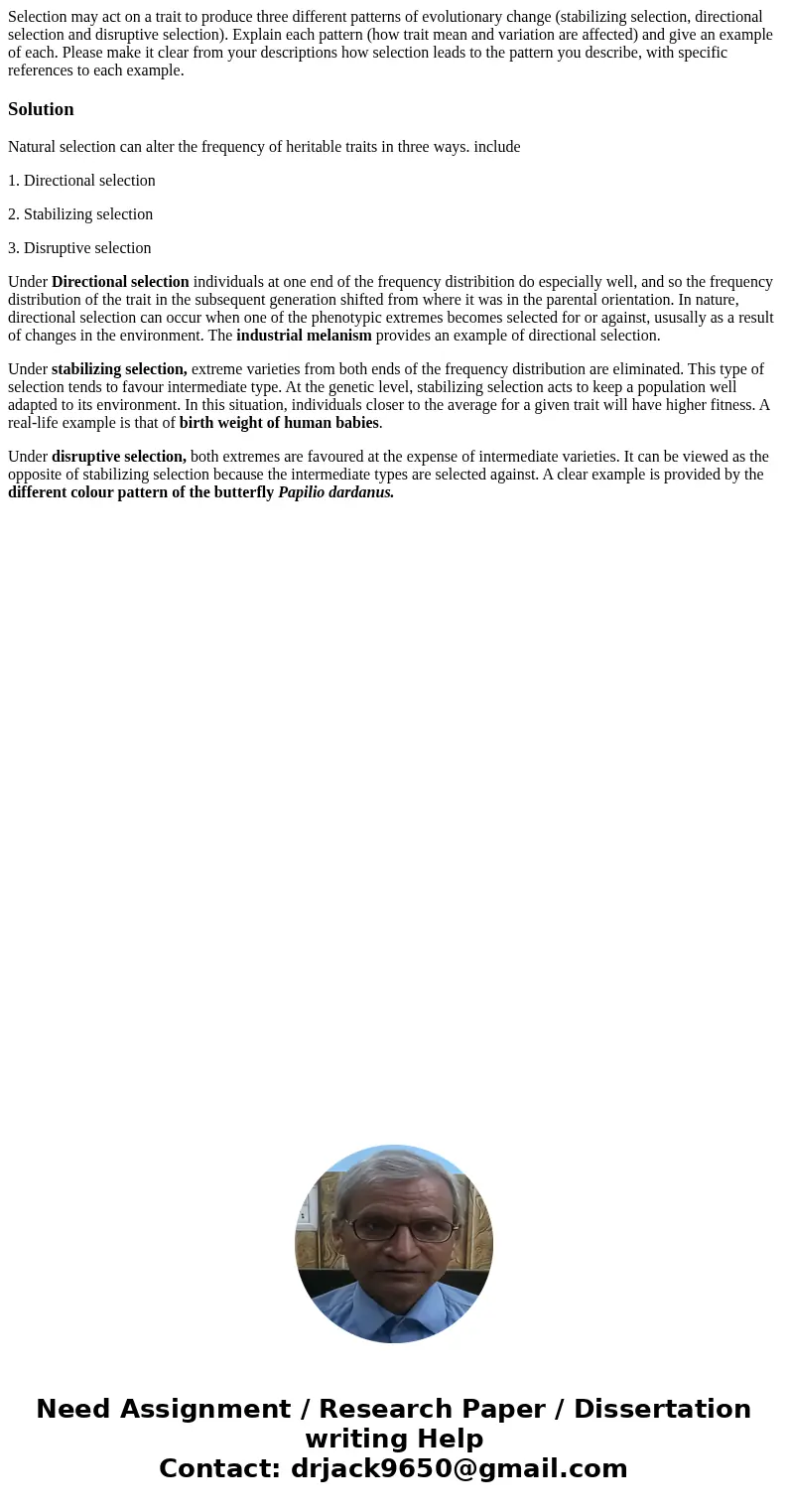Selection may act on a trait to produce three different patt
Solution
Natural selection can alter the frequency of heritable traits in three ways. include
1. Directional selection
2. Stabilizing selection
3. Disruptive selection
Under Directional selection individuals at one end of the frequency distribition do especially well, and so the frequency distribution of the trait in the subsequent generation shifted from where it was in the parental orientation. In nature, directional selection can occur when one of the phenotypic extremes becomes selected for or against, ususally as a result of changes in the environment. The industrial melanism provides an example of directional selection.
Under stabilizing selection, extreme varieties from both ends of the frequency distribution are eliminated. This type of selection tends to favour intermediate type. At the genetic level, stabilizing selection acts to keep a population well adapted to its environment. In this situation, individuals closer to the average for a given trait will have higher fitness. A real-life example is that of birth weight of human babies.
Under disruptive selection, both extremes are favoured at the expense of intermediate varieties. It can be viewed as the opposite of stabilizing selection because the intermediate types are selected against. A clear example is provided by the different colour pattern of the butterfly Papilio dardanus.

 Homework Sourse
Homework Sourse